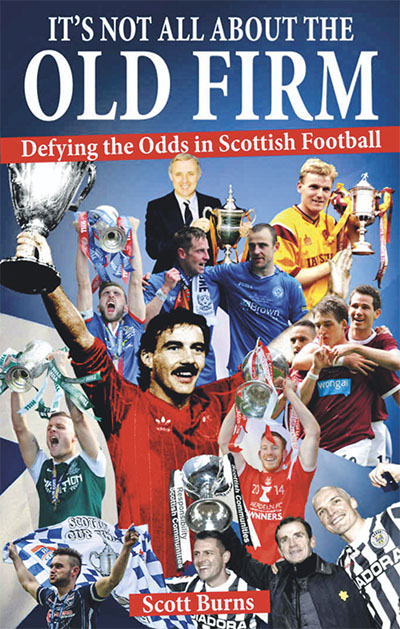
by Scott Burns
Pitch Publishing, £12.99
Reviewed by Gordon Cairns
From WSC 373, March 2018
Buy the book
Eight clubs from outside Glasgow have won a senior domestic competitive trophy since Rangers last landed one in 2011. But with Celtic’s fourth consecutive major trophy win in November, the theme of Scott Burns’ book is in danger of becoming a historical curio.
These eight campaigns are included in this account of each of the outsiders’ victories, using the rise of the New Firm of Aberdeen and Dundee United in the early 1980s as the starting point. Each chapter follows a different club’s campaign from early season or the first round of the cup through to the victory celebration in the home town.
Burns’ day job as a sports reporter at the Scottish Daily Express shines through, in that work is heavy on description but weaker on analysing what it takes for a provincial club to win one of the top honours in Scottish football. In an early chapter Eamonn Bannon, a title winner in 1983, suggests the same group of players would have been more successful if playing for the Old Firm: “I think if our Dundee United team had been in blue or green-and-white hooped shirts then I think we would have won the League a lot more.” However, Bannon’s analysis isn’t followed up in any meaningful way.
A quick glance at the roll of honour at the end of the book shows that the crucial factor is to avoid one of the big two in the final, with a provincial team’s chances more than doubled if they faced anyone else on the big day at Hampden. There were greater opportunities during certain periods of this history for the smaller clubs, depending on the Glasgow power struggle. The 1980s were full of opportunities before the Graeme Souness-led revival at Ibrox, while Celtic being on life support in the 1990s and Rangers’ current malaise has spread the prizes further around.
Each winner’s story sticks to a rigid structure which begins with the details about each game en route to the final, then what happened when the players stayed at their cup final retreat. The most entertaining of these sections is of the Raith Rovers team billeted in a haunted hotel, where club captain Gordon Dalziel says: “I woke up in the middle of the night and I was certain I could see somebody standing at the end of my bed.” Burns also talks to several former Old Firm players enjoying their first open-top bus celebrations, an event too provocative for Glasgow. Inevitably, we also hear from the players who missed the start of the partying as they had to stay back for the drugs test but couldn’t pee.
The in-depth coverage on each club, especially the chapters on St Mirren, St Johnstone and Raith Rovers, would be an unusual thrill for some fans but reading about other people’s drinking exploits gets to be a bit wearying after 29 chapters.